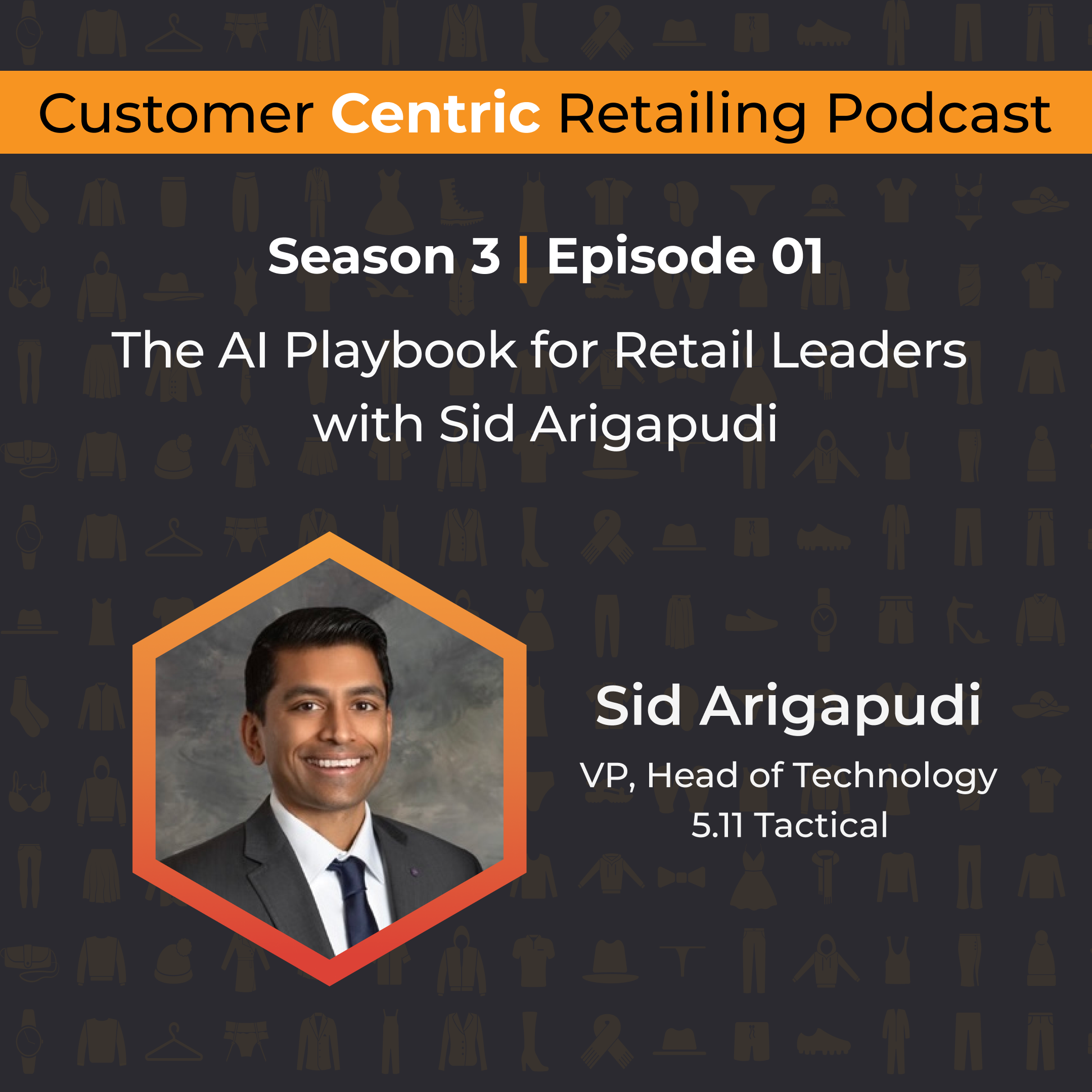[ 5:34 - 6:47 ] What’s the right way to approach tech decisions in retail?
According to Sid, the approach to implementing new technology must be to prioritize process optimization first. Instead of immediately asking which tool to implement, the focus should be on defining the desired outcome and improving current practices. This involves a "test and learn" phase to understand what works and what doesn't within the existing workflow. Sid advocates for being "scrappy" and testing and refining the process manually or with existing resources before investing in new technology. This method ensures that by the time a tool is introduced, the organization already knows how it fits and has a clearly defined scope for the project. Technology is the "how" that comes later, after the fundamental business problem and its solution have been thoroughly understood and tested in practice.
[ 9:31 - 10:34 ] How can retailers progressively implement AI for maximum impact?
5.11’s approach to AI centers on a deliberate, step-by-step “crawl, walk, run” strategy. They start with the crawl phase, implementing AI in practical ways that immediately reduce workload and boost productivity for their lean, knowledge-rich teams. As they gain experience, they plan to walk, expanding AI’s role across functional areas and deepening its impact on efficiency. The ultimate goal is to run, where AI becomes a fully integrated collaborator, supercharging employees’ capabilities and driving growth. This phased approach ensures they unlock value progressively while building a strong foundation for more advanced AI initiatives.
[ 14:07 - 16:54 ] What’s the best way to leverage legacy systems for AI initiatives in retail?
Retailers often struggle to integrate new technologies like AI with existing legacy systems, which may work well but carry technical debt. Instead of costly full replacements, the strategy is to assess current systems, identify gaps, and deploy AI-enabled microservices or specialized tools to enhance key functions like order orchestration or customer interaction. This targeted approach delivers faster ROI and speed to market without a full replatforming.
[ 16:56 - 18:11 ] How can retailers balance AI costs with business benefits?
Sid discusses the practical application of Artificial Intelligence to enhance business operations, specifically focusing on improving profit margins and optimizing product delivery to customers. While the initial concepts of integrating AI are promising,he acknowledges key uncertainties regarding the scalability and computational cost of these systems. However, the potential benefits, such as faster core product delivery and better decision-making through AI augmentation, are expected to offset the implementation expenses. Ultimately, the goal must be to introduce these advanced tools to augment existing, functional legacy systems rather than replacing them entirely.
[ 20:41 - 21:55 ] What role can AI play in simplifying business intelligence?
AI tools help businesses get to the essential insights faster by answering the critical question of “So what?” Traditional dashboards like Power BI often become overwhelming as data grows, turning into large and complex systems that make it hard to find what truly matters. AI addresses this by surfacing the most relevant KPIs, showing where performance is strong or weak and mapping results against revenue or other targets across different time frames. With clear insights delivered quickly, leaders can spend less time on manual analysis and more time on strategic decision-making.
[ 22:27 - 23:37 ] AI use cases that deliver quick wins in retail
As retailers take their first steps with AI, knowledge bots stand out as one of the most accessible and impactful applications. By uploading policies, emails, and other key documents, organizations can quickly deploy bots that deliver accurate, on-demand answers. Internally, this reduces the burden on teams by automating routine inquiries, while externally, bots enhance customer engagement by supporting sales associates and answering product questions online or in-store. These straightforward use cases represent low-hanging fruit for retailers early in their AI journey.
[ 24:59 - 26:34 ] How can retailers drive AI adoption and maximize ROI?
While the long-term cost of AI tools is still uncertain, their current affordability makes early adoption a strong opportunity. The real value comes from driving adoption because productivity gains serve as the clearest indicator of ROI. Training helps employees use AI effectively without needing advanced technical skills. Sharing practical examples, like cutting a 30-minute task down to seconds, creates “aha” moments that spark broader usage. With a focus on training and evangelizing real use cases, organizations can build confidence, capture quick wins, and set the foundation for lasting AI success.
[ 41:02 - 43:21 ] What does the future hold for AI in retail?
Over the next three to five years, the focus for AI in retail will be on using tools to achieve speed to market and make smarter, faster business decisions. AI is moving beyond a “playground” phase and becoming a serious, strategic tool that can inform both planning and execution. By leveraging AI to respond quickly to trends and optimize operations, businesses can avoid missed opportunities and gain a competitive edge. With many initiatives now in the crawl and walk stages, the potential “run” phase promises even greater capabilities, including agentic AI that can make decisions autonomously to accelerate growth and efficiency across the organization.




